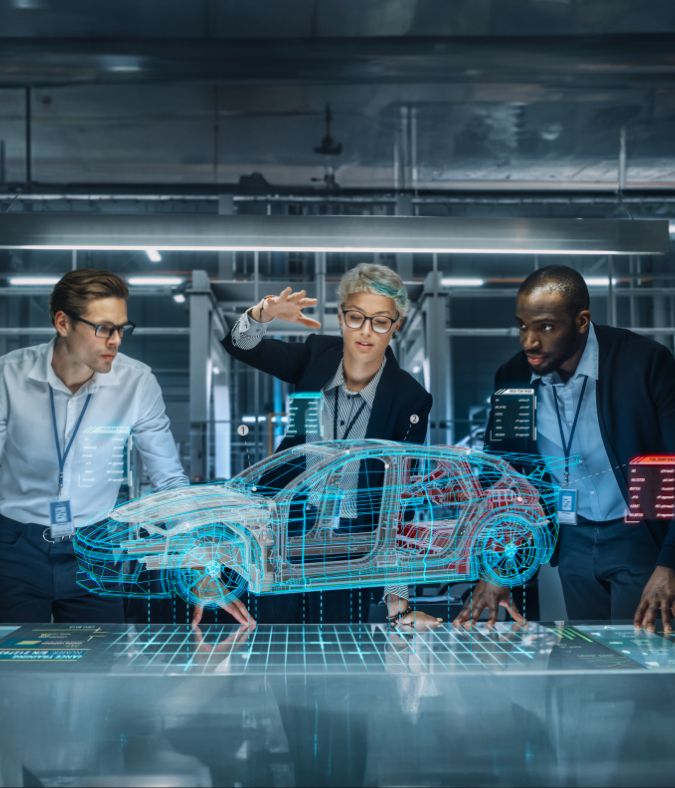The automotive industry stands on the brink of a revolutionary shift towards software-defined vehicles (SDVs) and autonomous driving technologies. Gartner analysts forecast a quadrupling of Level 4 autonomous robotaxis by 2030 compared to the number of taxis in 2022, marking a new era of innovation. In this transformative era, Automotive Original Equipment Manufacturers (OEMs) are leading the charge, equipping vehicles with advanced features powered by embedded processors or Electronic Control Units (ECUs). Today's vehicles, boasting over 100 ECUs, offer an array of functionalities to drivers, with SDV architecture enabling upgradable software and constant connectivity. This evolution generates a wealth of log data, presenting both challenges and opportunities for OEMs.
In this era of digital transformation, managing and leveraging the vast volumes of automotive data becomes a dual challenge and opportunity for OEMs. Investments in scalable storage, distributed computing, and robust data governance frameworks are essential to ensure privacy and security. This data, a treasure trove of information, is instrumental in testing, enhancing existing automotive software components, and developing new features to stay competitive in a digital world. By mastering these complexities and tapping into the power of automotive data, OEMs can foster innovation, boost efficiency, offer unmatched customer experiences, and drive the future of mobility.
Navigating the Data Terrain
Advanced Driver-Assistance Systems (ADAS) and the integration of up to 100 ECUs per vehicle contribute to a scenario where a single vehicle can generate up to 2 GB of data in just 30 minutes. This exponential growth, scaling to terabytes across a fleet, effectively turns modern vehicles into mobile data centers. The challenge for OEMs lies in effectively harnessing this vast and complex data, necessitating investments in robust infrastructure for data storage, processing, and analysis.
Vehicles supporting up to level-3 driver assistance or level-4 autonomous driving utilize a mix of camera and sensor inputs, real-time traffic data, diagnostics, and performance metrics. Data is logged at each stage, leading to significant data accumulation. To tackle these challenges, OEMs must invest in scalable storage solutions and distributed computing architectures. A balanced approach, leveraging both in-vehicle processing and a mix of on-premise and cloud-based storage solutions, can significantly streamline data handling. Advanced analytics and edge-based processing further enhance data analysis efficiency, transforming raw data into actionable insights.
However, as OEMs explore data monetization, they face ethical and privacy concerns. The interconnected nature of modern vehicles introduces significant security risks, as highlighted by Forrester, emphasizing the necessity for OEMs to implement enhanced measures to protect against data breaches and cyber threats. Implementing solid data governance frameworks that comply with global privacy standards is crucial to protect against data breaches and cyber threats, ensuring a secure transition towards data-driven automotive manufacturing.
Opportunities Unlocked by Vehicle Data
Vehicle data unlocks a myriad of opportunities for automotive OEMs. From predictive maintenance to the development of new features, the potential applications are vast:
The Road Ahead
The journey toward a data-driven future in the automotive industry is fraught with challenges, yet it presents transformative opportunities. The role of data as a catalyst for innovation and competitive differentiation cannot be overstated. With the right strategies and technologies in place, OEMs can navigate the complexities of data management, drive innovation, enhance efficiency, deliver unparalleled customer experiences, and propel the future of mobility forward.
Through the development of scalable data infrastructure, the implementation of advanced analytics, the know how to navigate technical hurdles and the assurance of data privacy, technology partners like Wipro play a crucial role in enabling OEMs to unlock the full potential of vehicle data. As the industry continues to evolve, this collaborative effort between OEMs and technology partners will be the cornerstone of achieving a sustainable, innovative, and customer-centric automotive future.




